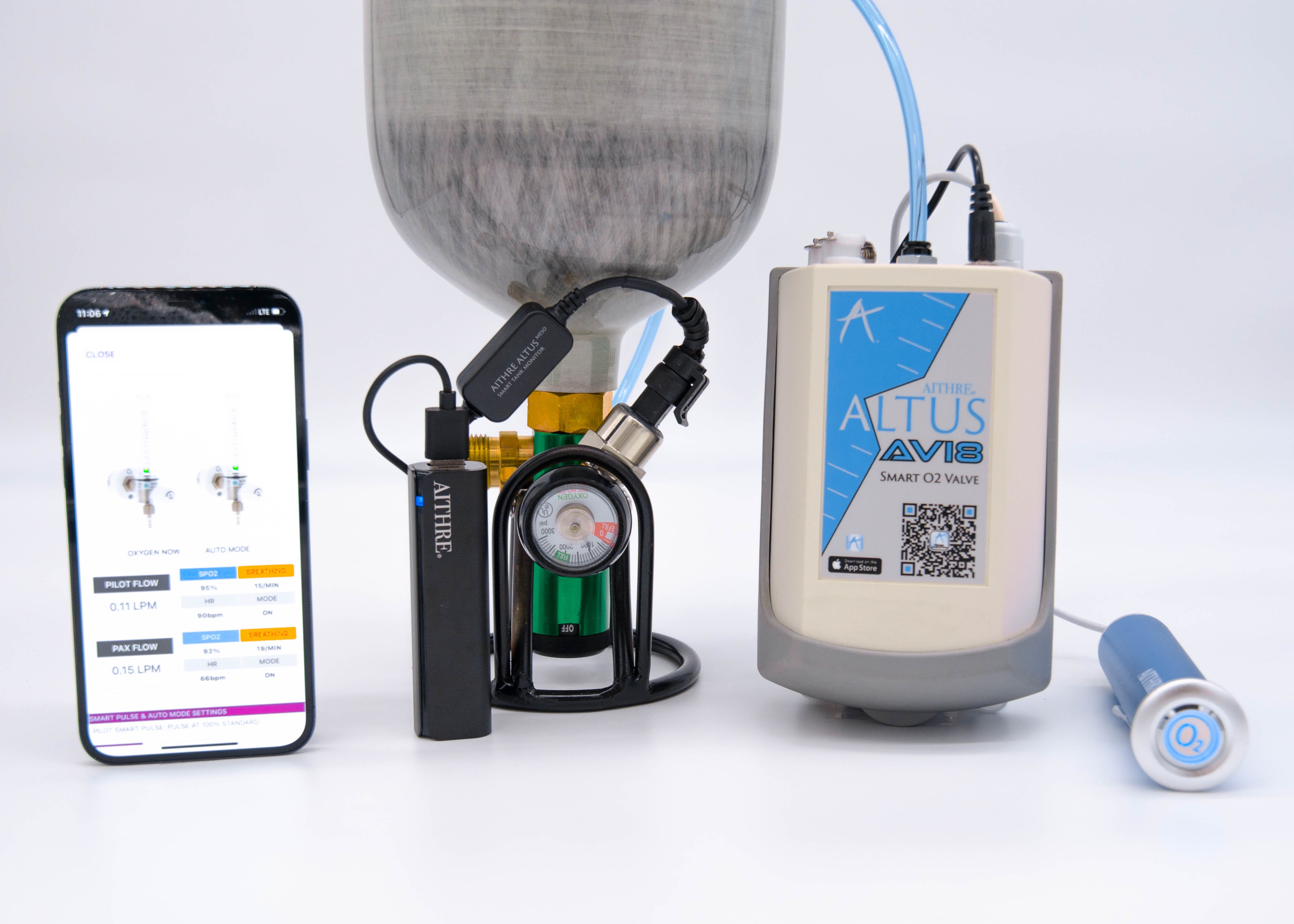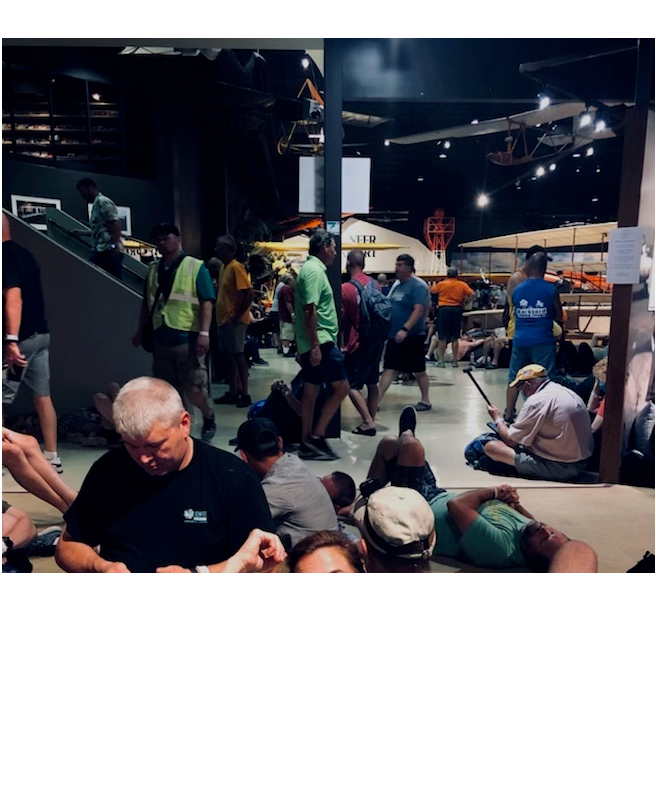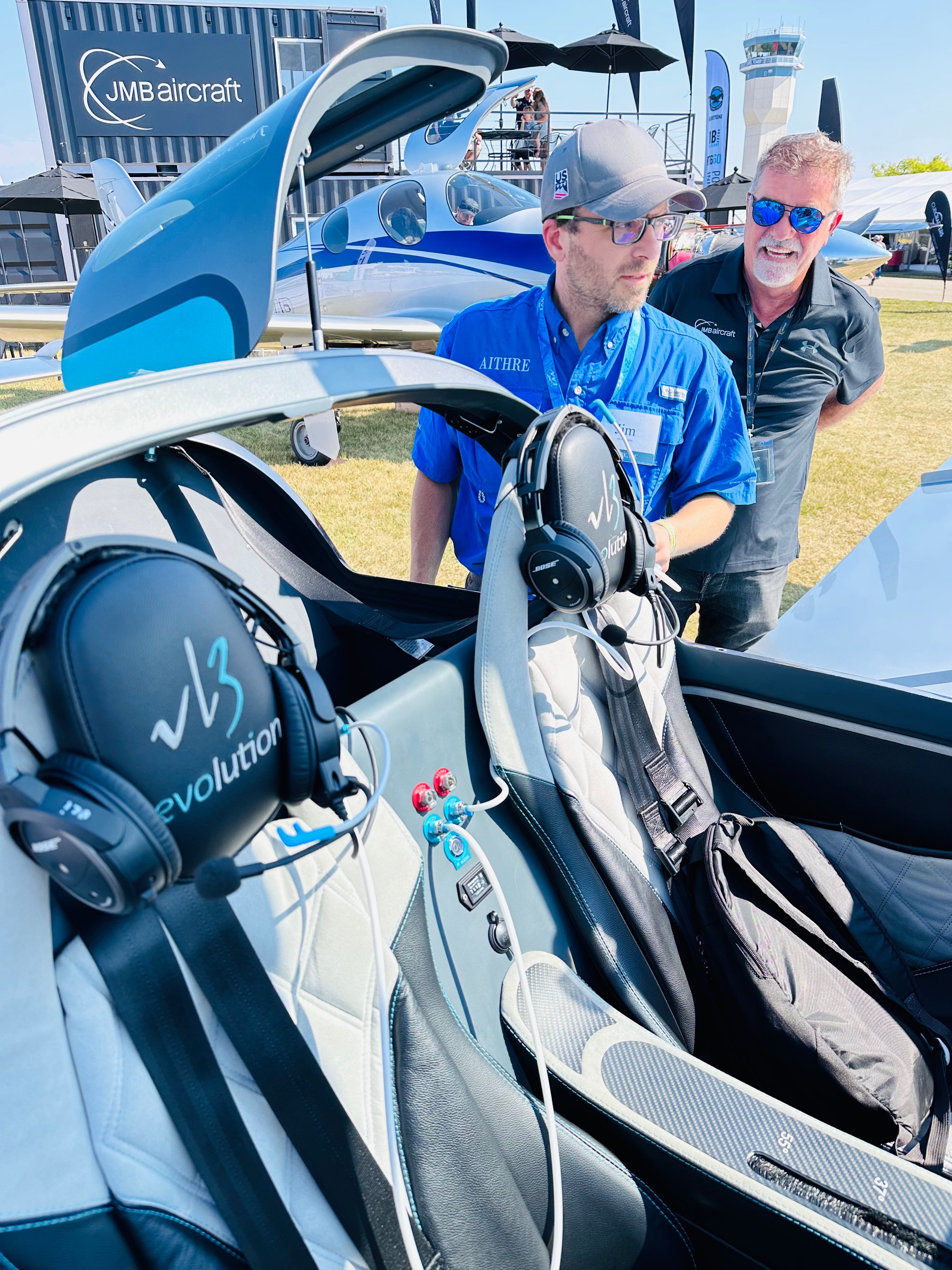The smoke across the United States is particularly bad this year. It has been bad during Oshkosh for a few years now, but this year was terrible. The weather tools don't do a great job quantifying the degree of smoke, with some airports reporting clear skies when you can't see more than a few miles.
Over Oregon, we had to climb to 14k MSL to get above very thick smoke that was unbreathable. Ground contact was negative, yet the nearby weather stations reported clear skies with limited visibility.
This smoke creates another problem besides visibility and that is carbon monoxide exposure. Our CO detectors are sensitive down to 1ppm, which is insanely sensitive as compared to the other guy. With the real-time trend graphing, we observed CO consistently above 10ppm and sometimes near 20ppm, due entirely to climbs in smoke layers. In this pictures, you can see the smoke visibility is near zero on an otherwise clear day and the eDot certified Shield CO detector is amber with high teen readouts. These numbers would drop below 5ppm when above the smoke layer.
The under-appreciated problem here is that CO accumulates with a 6 hr half-life in the blood. Persistent exposure to carbon monoxide results in build-up, making you more susceptible to low oxygen at altitude. Hypoxia will set in sooner as will poorer judgment. Unfortunately, trickle oxygen delivery isn't sufficient to overcome carbon monoxide because the binding affinity is 200 times greater for carbon monoxide to the competing oxygen binding sites in the hemoglobin.
Bottom line is that pilots exposed to persistent carbon monoxide over many flights and many days can have a baseline of toxicity in their blood that makes hypoxia symptoms come on at lower altitudes. So, be careful out there with this smoke and make sure you are aware of what you are flying in. Pay attention to early symptoms of hypoxia, such as headaches, tunnel vision, mistakes, and get yourself one of our portable CO detectors or certified built-in versions.






